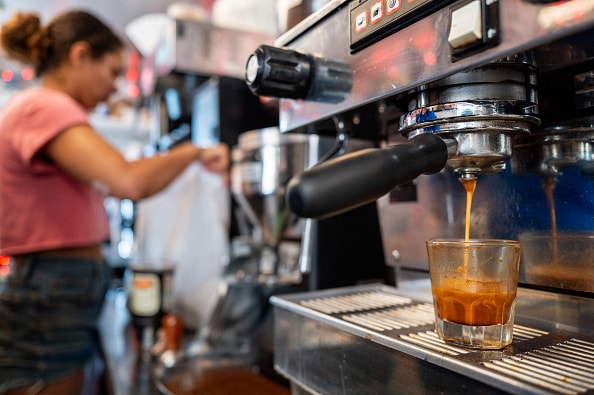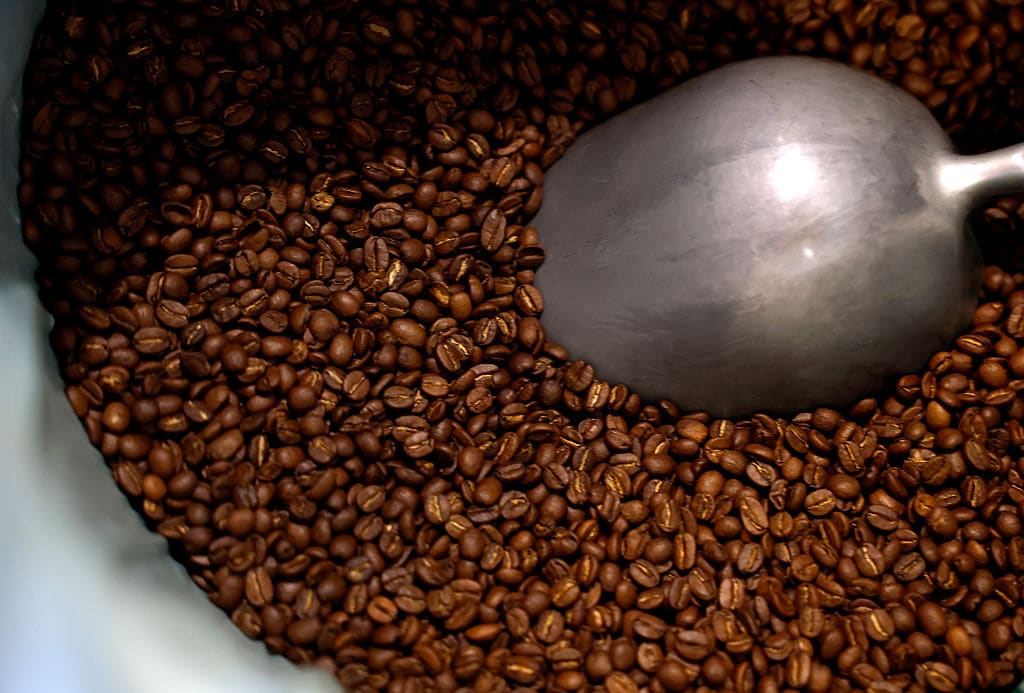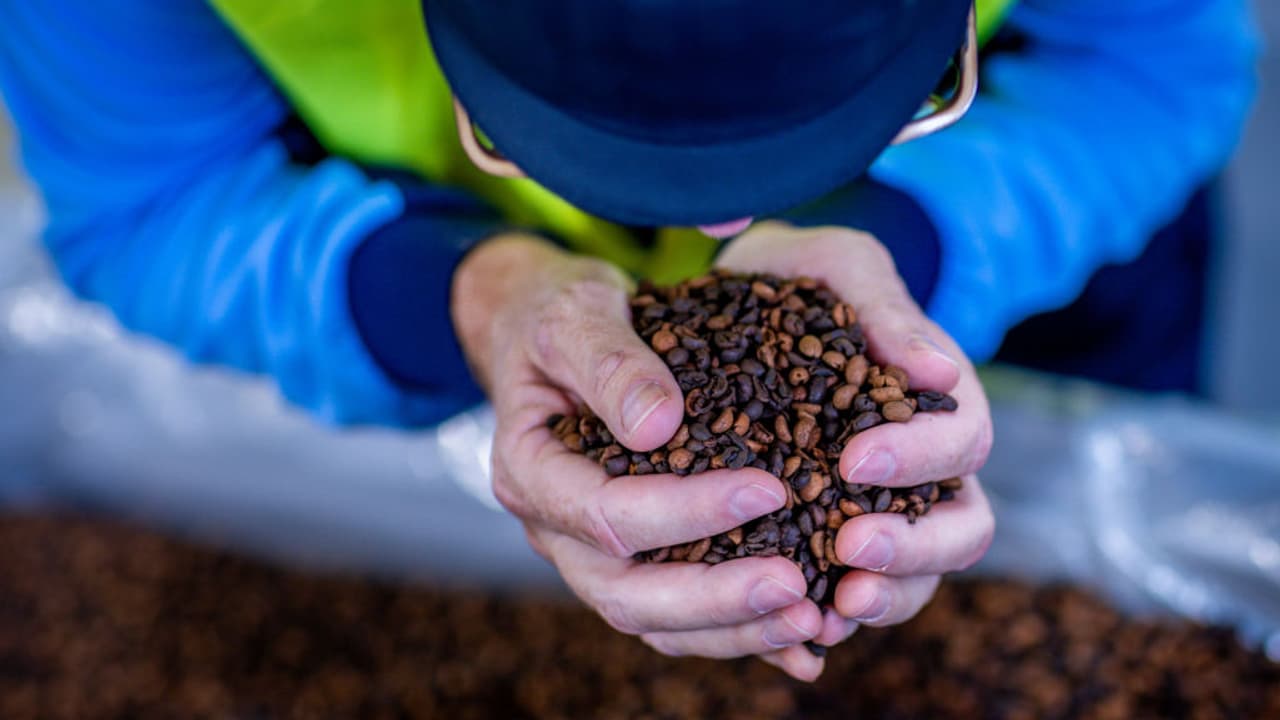The beans are precious because they survived severe drought in a year when environmental conditions depressed coffee production globally, doubling the price of raw beans in just months.
With her striking purple-and-pink locks dancing in the warehouse air, Renee Colon climbs a stepladder and carefully pours Brazilian coffee beans into a timeworn, groaning roaster that hums with history and heat. In a world where coffee is rapidly becoming a luxury, her small-batch roastery feels like both a sanctuary and a battlefield.

These beans—resilient survivors of a brutal drought—are no ordinary stock. In a year plagued by extreme climate conditions that have devastated global yields, they’re precious cargo. Supply has tightened while demand remains insatiable, sending raw coffee prices into an upward spiral.

“Unfortunately, coffee is going to become more scarce,” said Colon, founder and lead roaster at Fuego Coffee Roasters. “Seeing that dramatic loss of the Brazilian crop is a perfect example.”
Brazil and Vietnam, the two titans of global coffee production, have seen their forecasts slashed due to relentless heat and parching drought. While global output is still projected to rise modestly, it lags far behind investor expectations—causing prices to soar, fueled by unrelenting demand from Europe, the US, and China.

For roasters like Colon, these numbers are more than just economic data—they’re daily dilemmas. When prices peaked in February, she found herself facing beans that cost $5.50 per pound—more than twice what she paid just six months earlier. And that’s for mid-tier blends. Specialty beans, with their slow maturation and refined flavors, command even higher premiums.
Tariffs likely to make coffee more expensive?
Adding to the chaos is the tariff turbulence under President Donald Trump. His erratic trade measures—10% tariffs on coffee-heavy nations like Brazil, Ethiopia, and Colombia, with threats of even steeper levies on Vietnam and Indonesia—have upended supply chains and injected fresh uncertainty into an already fragile industry.
“With all these changes in coffee maybe we should open our own damn farm,” Colon muses.

But that's no easy fix. The finest coffee flourishes in equatorial highlands—where long seasons and altitude coerce flavor from every bean. Colon’s ancestral home, Puerto Rico, offers little reprieve. Labor costs are steep, and climate volatility—especially the looming threat of hurricanes—makes investment risky. Domestic sources like Hawaii and California? “Either poor quality, overpriced or both,” she says bluntly.
February brought yet another blow: global green coffee exports plummeted 14.2% from the previous year. The International Coffee Organization reported the highest raw coffee price since 1977—when frost decimated 70% of Brazil’s crops. History, it seems, is repeating.
But it’s not just nature turning up the heat.
“Inflation is driving up the cost of labor, fertilizers, and borrowing,” explained Daria Whalen, a buyer for San Francisco’s Ritual Coffee Roasters. She recounted a surreal trip to Mexico in April, attempting to finalize contracts as Trump’s tariff threats loomed and receded like a political tide. “It was kind of like roller coaster day, because at the end of the day it didn’t exist,” Whalen said.
Some importers, anticipating tariffs, have bulk-bought beans—contributing to the price swell. Colón expects even steeper costs as those import taxes begin hitting invoices. And with consumer confidence plunging to a 12-year low, she fears her premium brews may become casualties in household budget cuts.
“It is tough on our end because it drives the price up, tough on the consumer end because they have to pay more and tough on the farmers' end because they may be experiencing really significant losses,” Colón said.
Yet Colon remains undeterred.
In December, she and her husband invested $50,000 in a custom-built Turkish coffee roaster designed to triple their roasting capacity. They’re betting on growth—expanding wholesale partnerships, and rolling out a direct-to-home subscription model that delivers curated beans to coffee aficionados each month.
To adapt, they’ve nudged up wholesale prices by 25 cents per pound and are weighing modest hikes on pour-overs and espresso drinks at their two cafés.
At one cafe, Melo, the price tags don’t faze loyal customers like Rob Newell, a high school biology teacher cradling his infant daughter. “We know we could go find coffee cheaper somewhere else,” he said. “Maybe it’s just because we’re new parents, but you get, like, cabin fever staying in the house all day.”
Colon, ever the pragmatist, is also slashing costs behind the scenes.
She’s exploring ways to stockpile beans at her warehouse, avoiding $500 monthly fees for storage in port cities. She’s also forging direct relationships with farmers—like a Colombian grower she contracted with in February, dodging the worst of the price surge by locking in a one-year deal.
In January, she declined a Montreal importer’s offer, wary of Canada’s unpredictable trade positioning and the logistical risks of crossing another border. “I want things to be less complicated instead of more,” she said.


